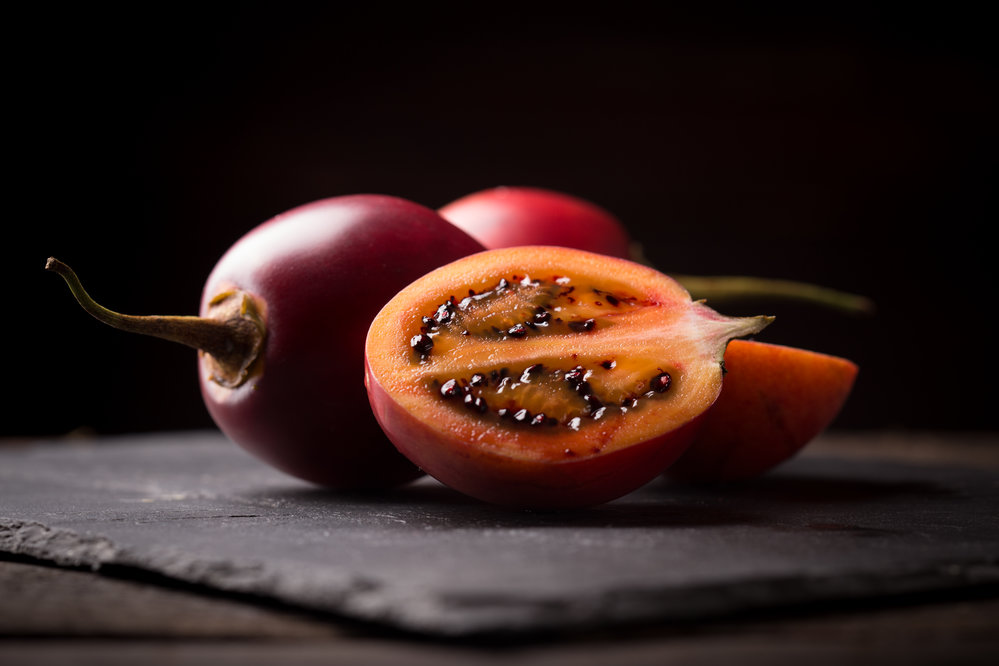If you’re up to trying something a bit different this spring, then tamarillos might be the answer.
Tamarillos, tangy and sweet and often compared to Kiwi fruit, tomato, guava, and passionfruit, they’re the perfect addition to a fruit pie, eaten on its own or roast with a bit of cinnamon and vanilla and serve with some fresh vanilla bean ice-cream.
Spring is the ideal to plant tamarillo’s when the risk of frost has passed, and the weather has started to warm up. They thrive in full sun and well-drained soil, it’s also important to make sure that they’re sheltered from the wind and any frost. If you’re not sure if your soil is free draining, mound your soil up to raise the roots up.
Tamarillo plants are shallow-rooted and like passion fruit will need support. If you’re planting one tree, stake it straight away, if you’re planting three trees together Edible Garden recommends tying the three plants together to give them extra support. They usually grow up to 3m tall so they’re a great option for most NZ gardens as they don’t require much space plus you can grow them in pots too!
Our tamarillo seedlings won’t be far away, but in the meantime get their spot ready so once we have them available all the hard work is done, and you just need to get them in the ground!
Prep your soil by adding a fresh layer of compost and dig in some organic matter such as sheep pellets. Once that’s done and you have your seedlings, plant them about 1.5m apart and give them a good watering.
Tamarillos are fast-growing and need regular feeding to get large and juicy fruit. We recommend keeping your trees actively growing throughout the season by watering regularly especially during the dry season, feed them with some Tui citrus food and retain moisture by applying a layer of mulch.
A light frost will naturally prune your trees, if you don’t experience frost then your tamarillo trees need to be pruned around spring, fruit grows on new spring growth so cutting them back will encourage fruiting as well as help the tree maintain its shape. Remove any old and deadwood.
Tamarillos are quite susceptible to mildew and whitefly. You can treat mildew and whitefly with natural remedies such as spraying liquid seaweed or mixing a teaspoon of baking soda in 1l of water and adding a bit of dish soap.
It’s also important that you keep weed under control, not only do they suppress growth but they may harbour some unwanted guests or fungal disease.
After about 18- 20 months you should start enjoying, meaning you won’t have any fruit until after their second year of planting, but trust us when we say, it’s totally worth it!
Happy Gardening!

